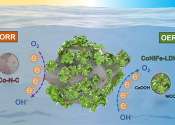Research shows zinc-air batteries could be the future of powering electric vehicles
Zinc-air batteries have emerged as a better alternative to lithium in a recent Edith Cowan University (ECU) study into the advancement of sustainable battery systems.
Aug 18, 2023
1
83









